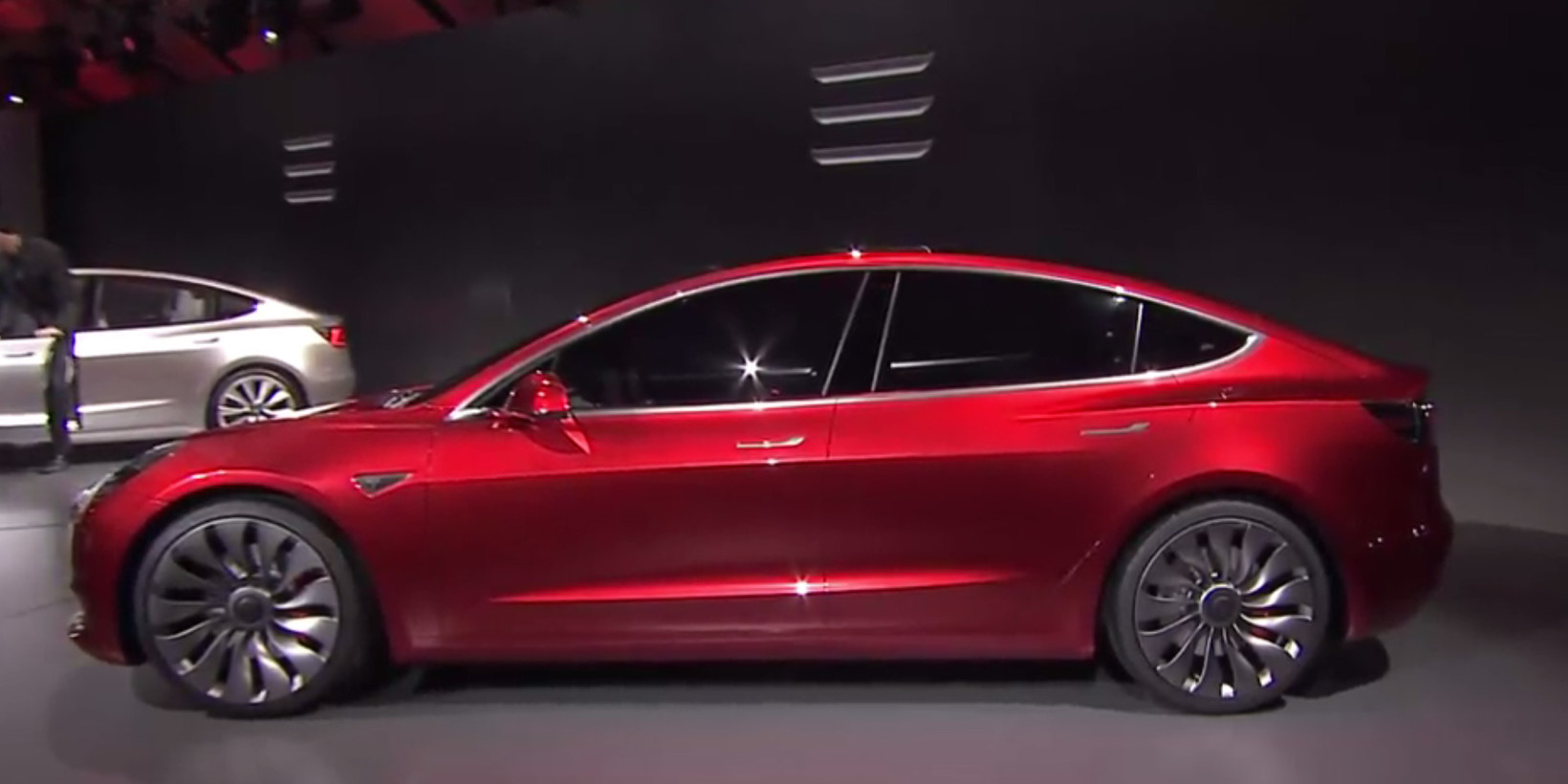Elon Musk did his big reveal last night on the long-awaited Tesla Model 3, the most anticipated mass-market electric vehicle. The vehicle promises some pretty amazing things, mainly a minimum 215-mile range at a base price of $35,000. Meanwhile, it will have autopilot features now found on the company’s electric SUV Model X.
How can they do all this for that price? The answer is the “gigafactory” for batteries outside Reno, currently under construction. As Musk describes in the video above, it’s the largest footprint building in the world that will produce more lithium ion batteries than all other facilities in the world combined. Now that’s a textbook example of economies of scale.
And in terms of look, it’s hard to deny that this is one sporty-looking performance vehicle, with an all-glass roof (hello squeegees!) and sleek, Porsche-like lines:
Meanwhile, as of last night, over 115,000 people have already deposited $1,000 to pre-order one.
It’s hard to deny that this is a historic moment in the history of electric vehicles, and by extension sustainable transportation. While the Chevy Bolt promises similar range and price, Tesla has the cache and history of innovation to deliver a market winner for the masses.
But the car won’t be available for probably another two years. So what does that mean for the industry in the interim?
The effect could actually be counter-productive for the electric vehicle industry. With such an appealing car waiting in the wings, why would someone want to buy one of the existing models out there now, when they’re priced about the same but have less than half the range of the Model 3 and none of the cool features or glitz?
Just as an example, think of the “new” Nissan LEAF. After five years in production, the new version from Nissan basically looks the same as the original and only has 20 additional miles of range, to 105 miles. And it costs about $32,000 before incentives. So why would I buy that LEAF now when in two years, for the same price, I can get more than twice the range and all the excitement and features of a Tesla?
For buyers like me who want to stay electric, we’ll probably just continue leasing, in order to wait out the next two years until the Model 3 and possibly other models like it are on the market. While this dynamic has always been present to some extent (the belief that the technology is improving so rapidly it’s not worth investing in a new EV just yet), the Model 3 unveil could put that psychology on steroids.
If I were working at Nissan, Chevy or BMW right now, I’d sure be worried about this trend. And I’d also be on notice that the whole industry needs to up its game in response to the Model 3.
Leave a Reply
You must be logged in to post a comment.



